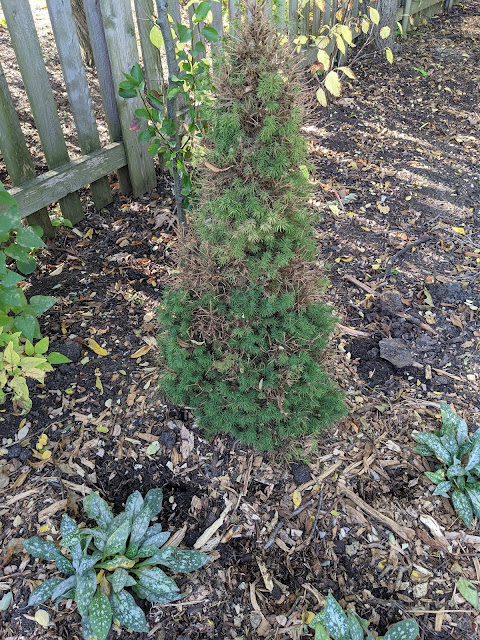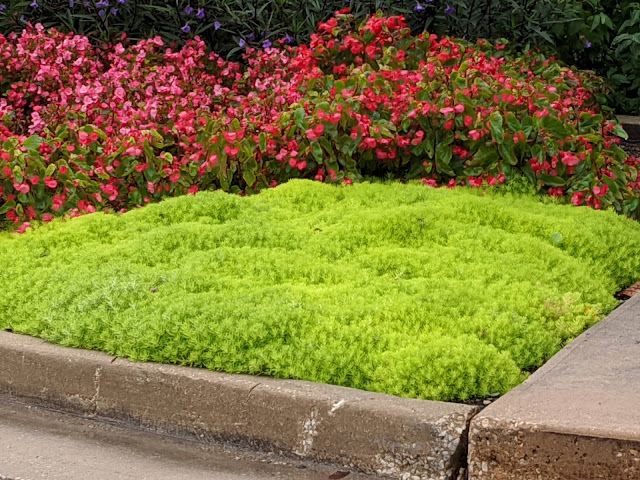Yellow Jackets On Our Linden Trees - October 2020

For the past two years, I've noticed that some sort of bee 1 has been finding a home on our espalier'd Linden trees. There has been A LOT of them. Swarming around the tree, climbing on the leaves, etc. I If you look closely at the photo, you can see some of them. Each tree has dozens of them. I figured that they had a nest close or something. But, I wanted to find out more. First, I wanted to figure out what they were. This handy chart from Rescue.com shows difference between wasps and yellow jackets . Based on that, I'm pretty sure these are Yellow Jackets. They're short and fat. So, I went out onto the Web to try to figure out why our Lindens are covered in these things. And, sure enough, there are a series of posts on Extension.org. Including this one that was answered by Robert Cox from CSU that tells me that the Yellow Jackets aren't there because they love the Linden . They're there because the tree has aphids is what he suspects. Yellowjacke





